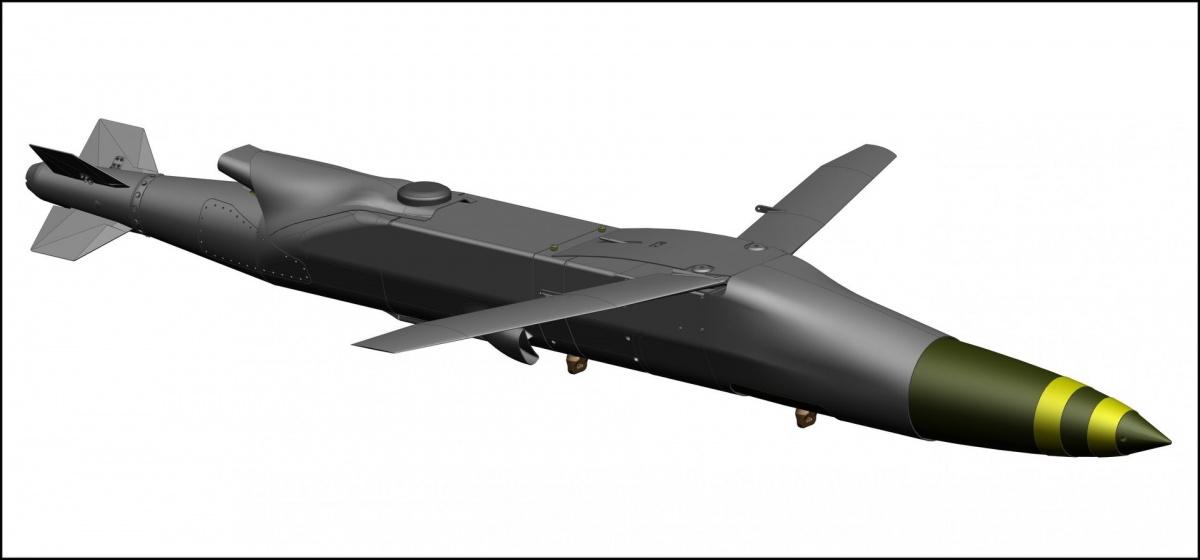On Saturday, August 23, 2025, the American daily The Wall Street Journal reported that the administration of U.S. President Donald Trump had for months blocked the use of MGM-140 ATACMS ballistic missiles against targets in Russia, but at the same time had recently agreed to the sale to Ukraine of 3,350 units of the newly developed extended-range precision air-launched weapon, ERAM (Extended Range Attack Munition), as part of a package worth 850 million USD, to be financed by European countries.
 Image: Powered JDAM / Boeing
Image: Powered JDAM / Boeing
The delivery of the first batch is expected within about six weeks, i.e., at the beginning of October this year. Little is known about the weapon itself, including its appearance. According to a U.S. Department of Defense report dated January 10 of this year, during Joe Biden’s presidency, a summary of military aid to Ukraine mentioned work on an inexpensive long-range cruise missile for mass production, funded by Denmark, the Netherlands, and the United States. The first reports about the new weapon appeared as early as July 2024.
Now, WSJ reports, citing two anonymous officials, that the ERAM is expected to have a range of 240 to 450 km (150–280 miles), depending on altitude and flight trajectory, which may suggest that it is essentially a powered version of a general-purpose bomb. This is noteworthy, given that since October 2023, U.S. companies Kratos Defense & Security Solutions and Boeing have been working on integrating the Mark 82 bomb with the JDAM (Joint Direct Attack Munition) glide kit under the project known as Powered JDAM. Boeing first revealed the project in early March 2020. This seems all the more likely since Ukraine has already been operating JDAM-ER bombs for over two years.
The ERAM guidance system is said to consist of GPS, GNSS, and inertial navigation (INS), combined with a seeker head in the terminal phase of flight. It is to be armed with a fragmentation-high explosive warhead designed to strike hardened targets such as ammunition depots, command posts, or radar installations. Its modular design will allow for the integration of other payloads at a later stage. The weapon’s carriers are expected to be combat aircraft, primarily Ukrainian F-16s.
However, WSJ sources indicate that the use of this weapon will be subject to restrictions imposed by the United States regarding target selection. That is why yesterday, during Ukraine’s Independence Day celebrations, President Volodymyr Zelensky emphasized that his country uses domestically produced weapons for strikes on Russian territory.
Earlier, on August 18, during a meeting with Donald Trump at the White House, the Ukrainian president highlighted his government’s intention to purchase U.S. weapons worth 90 billion USD as part of the discussed security guarantees.
As for Ukraine’s current capabilities to strike Russian rear areas, these rely primarily on various types of long-range combat drones operated by the Unmanned Systems Forces, such as the An-196 Liutyj, A-22, Piekło, and Palanycia. In addition, Neptune-MD missiles (known as Long Neptune), a land-attack variant of the RK-360MC Neptune coastal defense cruise missile system, are used to strike ground targets at distances of up to 1,000 km.
However, the actual game changer may be the FP-5 Flamingo cruise missile, unveiled on August 17 this year, with a range of over 3,000 km, along with the FP-1 drone, which has a range of 1,600 km.































